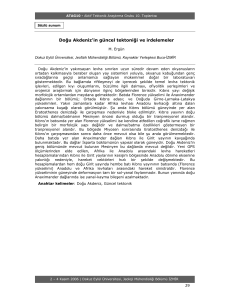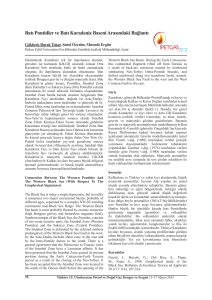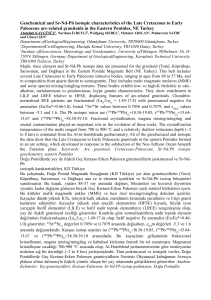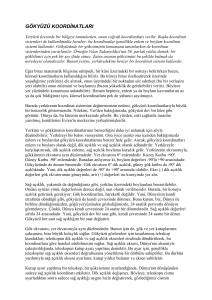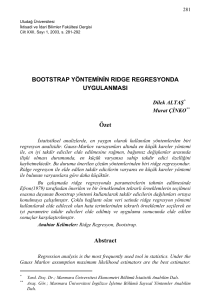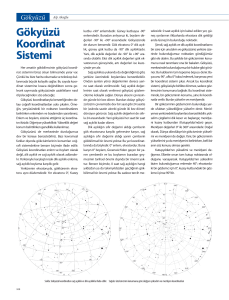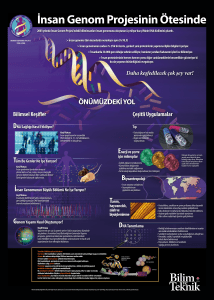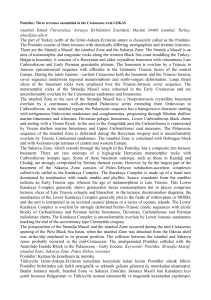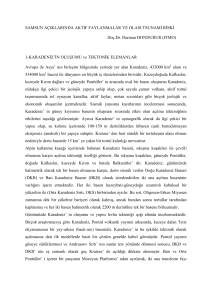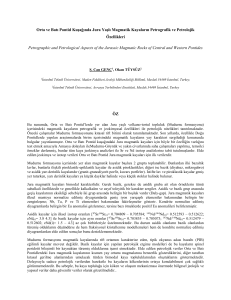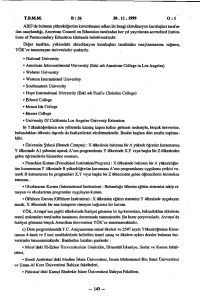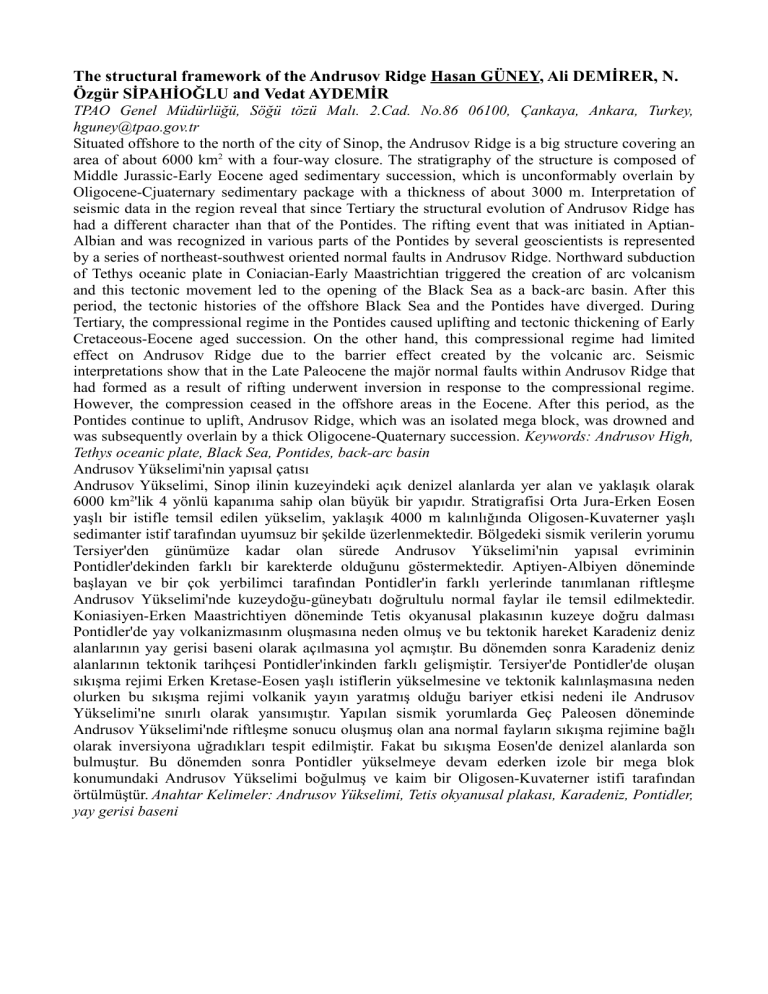
The structural framework of the Andrusov Ridge Hasan GÜNEY, Ali DEMİRER, N.
Özgür SİPAHİOĞLU and Vedat AYDEMİR
TPAO Genel Müdürlüğü, Söğü tözü Malı. 2.Cad. No.86 06100, Çankaya, Ankara, Turkey,
[email protected]
Situated offshore to the north of the city of Sinop, the Andrusov Ridge is a big structure covering an
area of about 6000 km2 with a four-way closure. The stratigraphy of the structure is composed of
Middle Jurassic-Early Eocene aged sedimentary succession, which is unconformably overlain by
Oligocene-Cjuaternary sedimentary package with a thickness of about 3000 m. Interpretation of
seismic data in the region reveal that since Tertiary the structural evolution of Andrusov Ridge has
had a different character ıhan that of the Pontides. The rifting event that was initiated in AptianAlbian and was recognized in various parts of the Pontides by several geoscientists is represented
by a series of northeast-southwest oriented normal faults in Andrusov Ridge. Northward subduction
of Tethys oceanic plate in Coniacian-Early Maastrichtian triggered the creation of arc volcanism
and this tectonic movement led to the opening of the Black Sea as a back-arc basin. After this
period, the tectonic histories of the offshore Black Sea and the Pontides have diverged. During
Tertiary, the compressional regime in the Pontides caused uplifting and tectonic thickening of Early
Cretaceous-Eocene aged succession. On the other hand, this compressional regime had limited
effect on Andrusov Ridge due to the barrier effect created by the volcanic arc. Seismic
interpretations show that in the Late Paleocene the majör normal faults within Andrusov Ridge that
had formed as a result of rifting underwent inversion in response to the compressional regime.
However, the compression ceased in the offshore areas in the Eocene. After this period, as the
Pontides continue to uplift, Andrusov Ridge, which was an isolated mega block, was drowned and
was subsequently overlain by a thick Oligocene-Quaternary succession. Keywords: Andrusov High,
Tethys oceanic plate, Black Sea, Pontides, back-arc basin
Andrusov Yükselimi'nin yapısal çatısı
Andrusov Yükselimi, Sinop ilinin kuzeyindeki açık denizel alanlarda yer alan ve yaklaşık olarak
6000 km2'lik 4 yönlü kapanıma sahip olan büyük bir yapıdır. Stratigrafisi Orta Jura-Erken Eosen
yaşlı bir istifle temsil edilen yükselim, yaklaşık 4000 m kalınlığında Oligosen-Kuvaterner yaşlı
sedimanter istif tarafından uyumsuz bir şekilde üzerlenmektedir. Bölgedeki sismik verilerin yorumu
Tersiyer'den günümüze kadar olan sürede Andrusov Yükselimi'nin yapısal evriminin
Pontidler'dekinden farklı bir karekterde olduğunu göstermektedir. Aptiyen-Albiyen döneminde
başlayan ve bir çok yerbilimci tarafından Pontidler'in farklı yerlerinde tanımlanan riftleşme
Andrusov Yükselimi'nde kuzeydoğu-güneybatı doğrultulu normal faylar ile temsil edilmektedir.
Koniasiyen-Erken Maastrichtiyen döneminde Tetis okyanusal plakasının kuzeye doğru dalması
Pontidler'de yay volkanizmasınm oluşmasına neden olmuş ve bu tektonik hareket Karadeniz deniz
alanlarının yay gerisi baseni olarak açılmasına yol açmıştır. Bu dönemden sonra Karadeniz deniz
alanlarının tektonik tarihçesi Pontidler'inkinden farklı gelişmiştir. Tersiyer'de Pontidler'de oluşan
sıkışma rejimi Erken Kretase-Eosen yaşlı istiflerin yükselmesine ve tektonik kalınlaşmasına neden
olurken bu sıkışma rejimi volkanik yayın yaratmış olduğu bariyer etkisi nedeni ile Andrusov
Yükselimi'ne sınırlı olarak yansımıştır. Yapılan sismik yorumlarda Geç Paleosen döneminde
Andrusov Yükselimi'nde riftleşme sonucu oluşmuş olan ana normal fayların sıkışma rejimine bağlı
olarak inversiyona uğradıkları tespit edilmiştir. Fakat bu sıkışma Eosen'de denizel alanlarda son
bulmuştur. Bu dönemden sonra Pontidler yükselmeye devam ederken izole bir mega blok
konumundaki Andrusov Yükselimi boğulmuş ve kaim bir Oligosen-Kuvaterner istifi tarafından
örtülmüştür. Anahtar Kelimeler: Andrusov Yükselimi, Tetis okyanusal plakası, Karadeniz, Pontidler,
yay gerisi baseni

